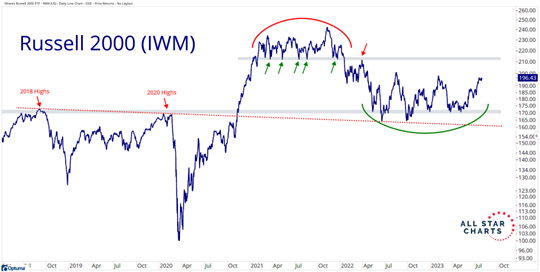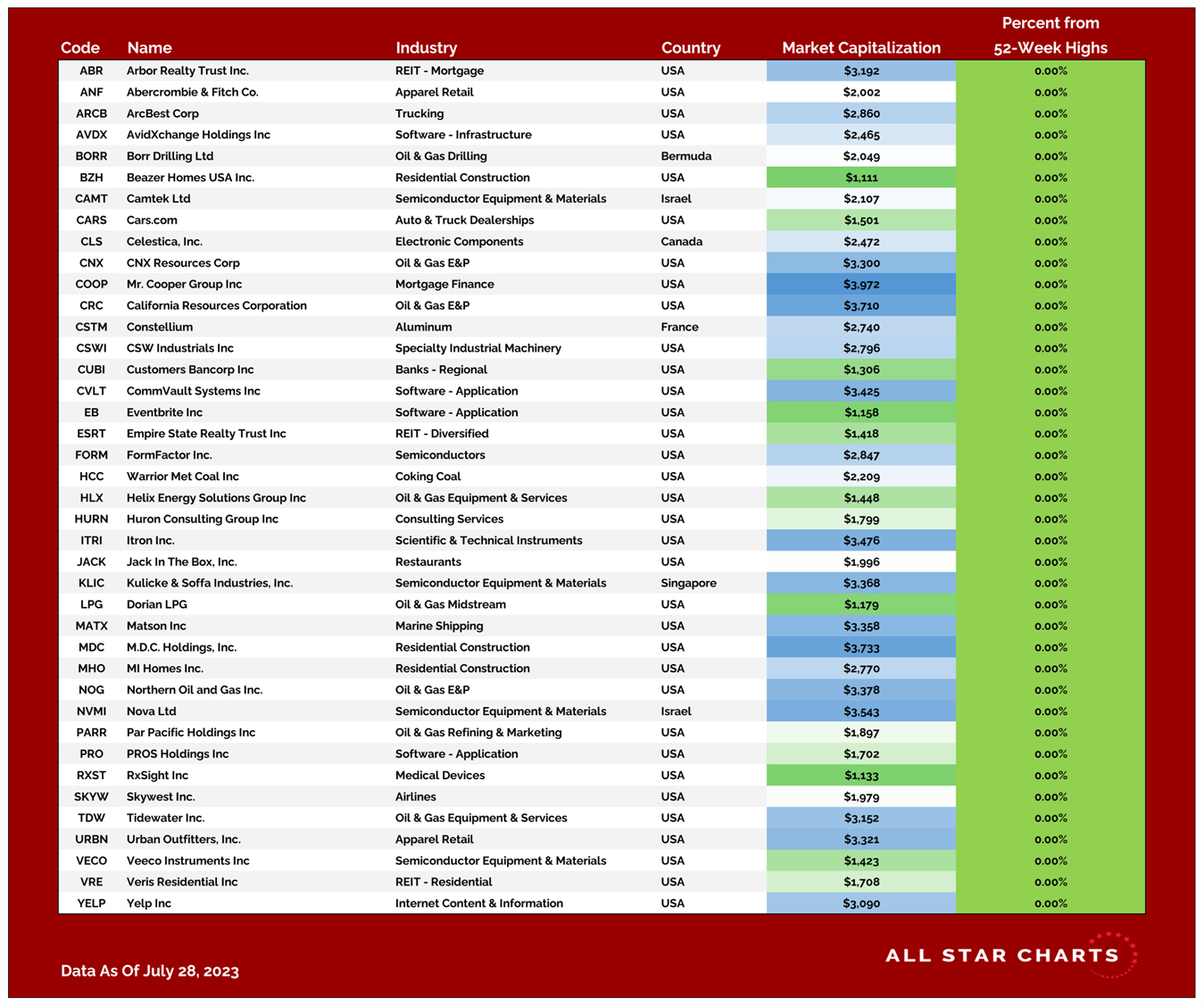To make the cut for our Minor Leaguers list, a company must have a market cap between $1 and $4B, states Steve Strazza of AllStarCharts.com.
It can be any US-listed equity. With participation expanding around the globe, we want all those ADRs in our universe. We apply the usual price and liquidity filters. Then we sort by proximity to new 52-week highs. The goal is to catch the strongest names while they’re small and have serious upside potential. We’re talking about ten-times moves if any of these stocks ever climb the ranks to the big leagues. There's still work to do, but it’s bullish that buyers are holding above and defending the prior-cycle highs.
Here’s a look at the Russell 2000 (IWM):

The 2018 and 2020 highs represent a major polarity zone. As long as we’re above them, the bottoming process is still playing out, and we anticipate a new uptrend to take hold eventually. However, we should still expect further sideways price action in this environment and will be best served by selecting our spots selectively and not forcing longs. We want to pay extra close attention to those names exhibiting relative strength through the recent volatility. It’s normal for the strongest stocks during periods of weakness to emerge as leaders when the selling pressure subsides.
Let’s take a look at this week’s table:

Since we sort our list by proximity to 52-week highs, the names toward the top are potential future leaders. They’re not just exhibiting impressive relative strength. They’re also making new highs on an absolute basis. Since we sort our list by proximity to 52-week highs, the names toward the top are potential future leaders. They’re not just exhibiting impressive relative strength. They’re also making new highs on an absolute basis.
To learn more about Steve Strazza, please visit AllStarCharts.com.


















